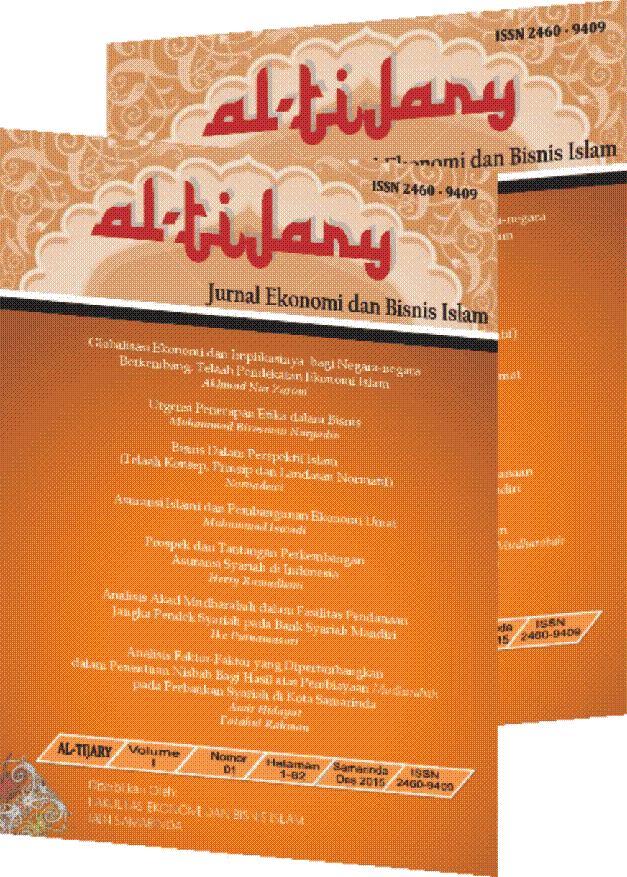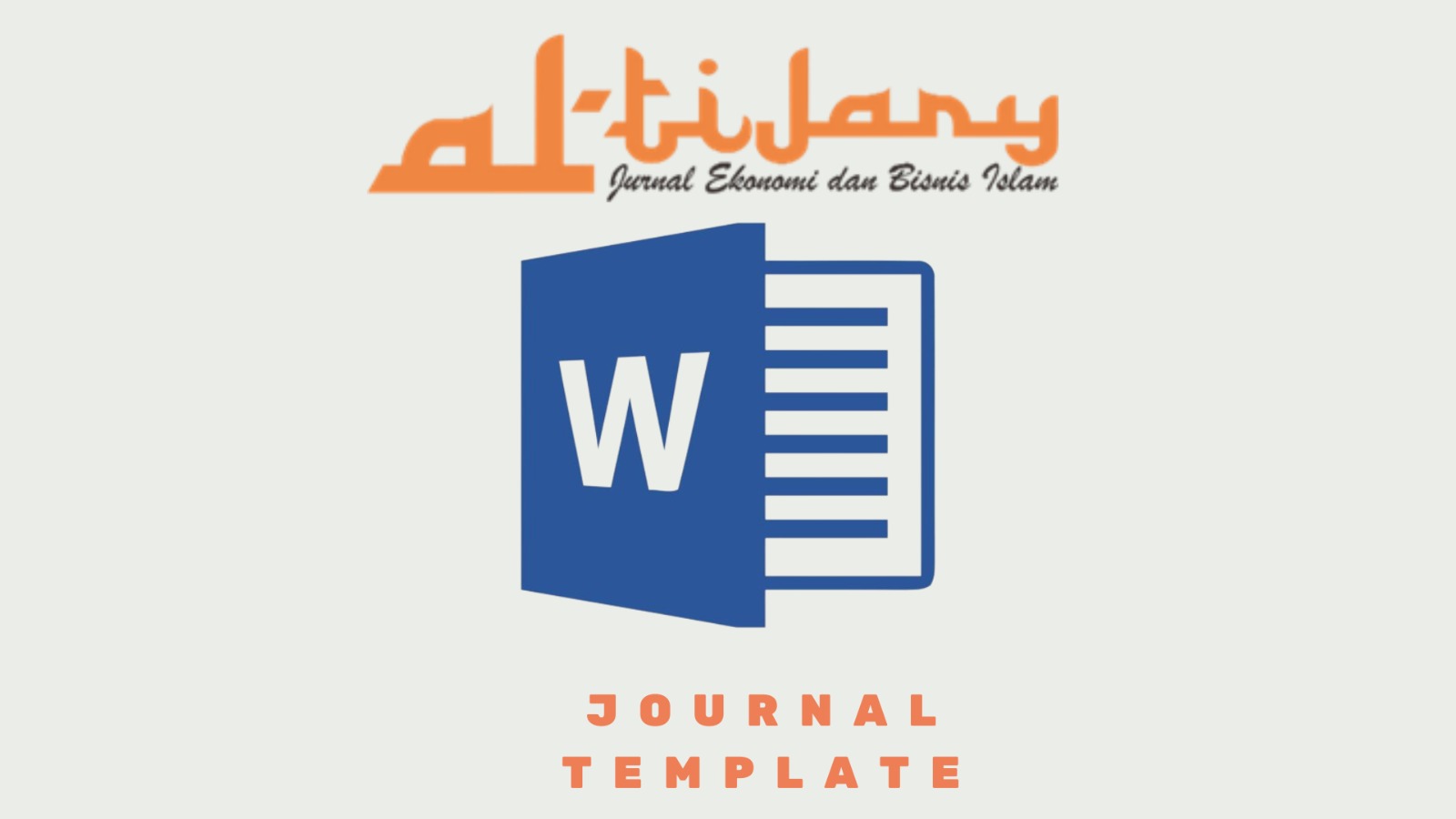Sharia Rural Banks in East Java: How Its Hazard Rate? (The Analysis Using Multiple Period Logit)
Abstract
Sharia Rural Banks in East Java provide essential financial services in compliance with Islamic law, fostering economic growth in rural communities. Assessing their hazard rate, which indicates the probability of bank failure over time, is crucial for understanding their stability and resilience amidst various economic and regulatory challenges. Therefore, this study aimed to determine the susceptibility opportunities of each BPRS. The second objective is to find out the financial ratios that cause it. The financial sustainability measure is a measuring tool to calculate the chance of survival. Financial sustainability approximates the value of Financial Self-Sufficiency (FSS). The population used is BPRS in East Java. The analysis technique used survival analysis and multiple period logit models Research variables that invariably affect the sustainability of BPRS include NPF, ROA, Bank Size, PM, FR, GLP, WoR, and LDR. The study on Sharia Rural Banks (BPRS) in East Java reveals that only about 30% of these banks have a stable financial condition, indicating a low overall sustainability rate. This suggests that the majority of BPRS need to improve their financial health to better support regional economic development and the growth of MSMEs.
References
Al Muhairi, M., & Nobanee, H. (2019). Sustainable Financial Management. SSRN Electronic Journal, 1–15.
Almilia, L. S., Shonhadji, N., & Angraini. (2009). Faktor-Faktor yang Mempengaruhi Financial Sustainability Ratio pada Bank Umum Swast Nasional Non Devisa Periode 1995-2005. Jurnal Akuntansi Dan Keuangan, 11(01), 42–52.
Anggiyani, S. W., & Yanto, H. (2016). Determinan Pengungkapan Sustainability Report Pada Perusahaan yang Terdaftar Di Bursa Efek Indonesia. Accounting Analysis Journal, 05(02), 1–10.
Ariani, N., Yuyetta, E. N. A., & Hardiningsih, P. (2020). The Support of Sharia Rural Banks Financing on National Financial Inclusion. International Journal of Islamic Business and Economics (IJIBEC), 04(01), 40–50.
Aryati, T., & Balafif, S. (2007). Analisis Faktor yang Mempengaruhi Tingkat Kesehatan Bank dengan Regresi Logit. Journal The Winners, 08(02), 111–125.
Bayai, I., & Ikhide, S. (2016). Financing and Financial Sustainability of Microfinance Institutions (MFIs): A Conceptual View. Banks and Bank Systems, 11(02), 21–32.
Bogan, V. L. (2012). Capital Structure and Sustainability: An Empirical Study of Microfinance Institutions. Review of Economics and Statistics, 94(04), 1045–1058.
Brau, J. C., & Woller, G. M. (2004). Microfinance: A Comprehensive Review of The existing literature. The Journal of Entrepreneurial Finance, 09(01), 1–27.
Bussiere, M., & Fratzscher, M. (2006). Towards a New Early Warning System of Financial Crises. Journal of International Money and Finance, 25(06), 953–973.
Christen, R. obert P., Rhyne, E., Vogel, R., & McKean, C. (1995). Maximizing The Outreach of Microenterprise Finance: An Analysis of Successful Microfinance Programs. U.S. Agency For International Developmet. Agency for International Development.
Dutta, P., & Das, D. (2014). Indian MFI at Crossroads: Sustainability Perspective. Corporate Governance, 14(05), 728–748.
Freddy, D., & Gultom, A. R. (2020). Analisis Pengaruh Perputaran Persediaan dan Perputaran Aset Tetap Terhadap Return on Assets (ROA). Tri Bisnis: Jurnal Kewirausahaan, Akuntansi Dan Manajemen, 02(01), 1–22.
Fuente, G. de la, & Velasco, P. (2022). Bank Debt Signalling and Corporate Sustainability: Does Incongruence Blur The Message? Finance Research Letters, 46(Part A), 1–8.
Hadi, A. R. A., Suryanto, T., & Hiung, E. Y. T. (2018). Bank Soundness and Sustainability-Evidence From Middle East, Indian Sub-Continent and African Banks. Ikonomika: Jurnal Ekonomi Dan Bisnis Islam, 03(01), 97–106.
Harun, U. (2016). Pengaruh Ratio-Ratio Keuangan CAR, LDR, NIM, BOPO, NPL Terhadap ROA. Jurnal Riset Bisnis Dan Manajemen, 04(01), 67–82.
Hollis, A., & Sweetman, A. (1998). Microcredit: What Can We Learn From the Past? World Development, 26(10), 1875–1891.
Hossain, M. S., & Khan, M. A. (2016). Financial Sustainability of Microfinance Institutions (MFIs) of Bangladesh. International Institute for Science, Technology & Education Accelerating Global Knowledge Creation and Sharing: Developing Country Studies, 06(06), 69–78.
Indrarini, R. (2017). Pembiayaan BPR Syariah dalam Peningkatan Kesejahteraan UMKM: Berdasarkan Maqashid Sharia. Jurnal Ekonomi Dan Bisnis Islam (Journal of Islamic Economics and Business), 03(01), 49–60.
Kasmir. (2004). Analsis Laporan Keuangan. PT. Rajagrafindo Persada.
Khandker, S. R. (1996). Grameen Bank: Impact, Costs, and Program Sustainability. Asian Development Bank, 14(01), 65–80.
Kinde, B. A. (2012). Financial Sustainability of Microfinance Institutions (MFIs) in Ethiopia. European Journal of Business and Management, 04(15), 1–11.
Kleinbaum, D. G., & Klein, M. (2012). Survival Analysis A Self-Learning Text. Springer Science & Business Media.
Marwa, N., & Aziakpono, M. (2015). Financial Sustainability of Tanzanian Saving and Credit Cooperatives. International Journal of Social Economics, 42(10), 870–887.
Miles, J. (2005). Tolerance and Variance Inflation Factor. Wiley StatsRef: Statistics Reference Online, 1–2.
Miranti, T., & Oktaviana, U. K. (2022). Effect of capital structure on financial sustainability of sharia public financing bank (BPRS). Ad-Deenar: Jurnal Ekonomi Dan Bisnis Islam, 6(01), 137–152.
Muallifin, O. R., & Priyadi, M. P. (2016). Dampak Pengungkapan Sustainability Report Terhadap Kinerja Keuangan dan Kinerja Pasar. Jurnal Ilmu Dan Riset Akuntansi, 05(04), 1–20.
Nasfi, Iska, S., Nofrivul, & Antoni. (2019). Financial Sustainability In the Assessment of The Financial Performance of West Sumatra Sharia Financing Bank (BPRS). Jurnal Menara Ekonomi: Penelitian Dan Kajian Ilmiah Bidang Ekonomi, 05(01), 51–62.
Nugraheni, A. U., & Septiarini, D. F. (2017). Pengaruh Equivalent Rate, Profitabilitas, dan Jumlah Kantor Terhadap Dana Pihak Ketiga BPRS di Indonesia (Periode Tahun 2013-2015). Jurnal Ekonomi Syariah Teori Dan Terapan, 04(11), 875–888.
Otoritas Jasa Keuangan. (2019). Laporan Perkembangan Keuangan Syariah Indonesia 2018.
Prasetyo, P. E. (2021). The Role of MSME on Unemployment in Indonesia. Turkish Journal of Computer and Mathematics Education (TURCOMAT), 12(13), 2519–2525.
Prastyo, D. D., Miranti, T., & Iriawan, N. (2017). Survival Analysis of Companies’ Delisting Time in Indonesian Stock Exchange Using Bayesian Multiple-Period Logit Approach. Malaysian Journal of Fundamental and Applied Sciences, Special Issue on Some Advances in Industrial and Applied Mathematics, 425–429.
Roy, M. I. (2017). Analisis Pertumbuhan Pembiayaan UMKM Terhadap Pertumbuhan Laba Bersih BPRS di Indonesia. Islamiconomic: Jurnal Ekonomi Islam, 08(01), 47–58.
Roy, M. K., & Sarker, Md. Abdus Salam Parvez, S. (2015). Sustainability in Banking Industry: Which way to move? ASA University Review, 09(02), 53–69.
Said, M. S., Annuar, H. A., & Hamdan, H. Bin. (2019). An Investigation into the Financial Sustainability of Islamic Saving, Credit Cooperative Society (SACCOS) in Tanzania. International Journal of Ethics and Systems, 35(02), 242–259.
Santoso, J., Khairunisa, & Triyanto, D. N. (2019). Influence of Capital Adequacy Ratio, Non Performing Loan and Loan to Deposit Ratio Towards Financial Sustainability Ratio (Empirical Study in Public And Private Bank That Listed On Indonesia Stock Exchange Period 2011-2015). E-Proceeding of Management, 2768.
Sarwono, A. E., & Sunarko, M. R. (2015). Pengaruh Variabel Rasio Keuangan Terhadap Financial Sustainability Ratio Pada Bank Campuran Periode 2011-2013. Eksplorasi: Jurnal Ilmu Sosial Dan Humaniora, 27(02), 540–549.
Septi, R., & Pangestuti, I. R. D. (2016). Analisis Rasio Kinerja Keuangan Terhadap Financial Sustainability Bank Perkreditan Rakyat (BPR) di Jawa Tengah (Periode 2010-2014). Dipenogoro Journal of Management, 05(06), 575–589.
Setiyono, E., & Amanah, L. (2016). Pengaruh Kinerja Keuangan dan Ukuran Perusahaan Terhadap Return Saham. JIRA: Jurnal Ilmu Dan Riset Akuntansi, 05(05), 1–17.
Spodick, E. (2016). Sustainability – it’s everyone’s job. Library Management, 37(6/7), 286–297.
Sugiarto, A. (2011). Analisa Pengaruh Beta, Size Perusahaan, DER dan PBV Ratio Terhadap Return Saham. Jurnal Dinamika Akuntansi, 03(01), 8–14.
Suryana, W. (2018, June 3). Asbisindo Targetkan 50 BPR Syariah Baru Hingga 2010. Republika.
Suwandi, I. (2019). Value Chains: The New Economic Imperialism. NYU Press.
Tanaka, K., Kinkyo, T., & Hamori, S. (2018). Financial Hazard Map: Financial Vulnerability Predicted by a Random Forests Classification Model. Sustainability, 10(05), 1–18.
Thapa, G. (2006). Sustainability and Governance of Microfinance Institutions: Recent Experiences and Some Lessons for Southeast Asia. Asian Journal of Agriculture and Development, 03(01–02), 17–37.
Wahyuni, S., & Fakhruddin, I. (2014). Analisis Faktor-Faktor yang Mempengaruhi Sustainability Ratio Perbankan Syariah di Indonesia. Seminar Nasional Dan The 1st Call for Paper Program Studi Akuntansi FEB UMS, 113–128.
Wilopo. (2006). Analisis Faktor-faktor yang Berpengaruh Terhadap Kecenderungan Kecurangan Akuntansi: Studi pada Perusahaan Publik dan Badan Usaha Milik Negara di Indonesia. The Indonesian Journal of Accounting Research, 09(03).
Yunus, M. (2003). Banker To The Poor: Micro-Lending and the Battle Against World Poverty. Public Affairs.
Yusuf, M. Y., & Mahriana, W. S. (2016). Faktor-Faktor yang Mempengaruhi Tingkat Profitabilitas Bank Pembiayaan Rakyat Syariah (BPRS) di Aceh. Iqtishadia: Jurnal Kajian Ekonomi Dan Bisnis Islam, 09(02), 246–275.
Zubair, M. K. (2016). Analisis Faktor-Faktor Sustainabilitas Lembaga Keuangan Mikro Syariah. Iqtishadia: Jurnal Kajian Ekonomi Dan Bisnis Islam, 09(02), 201–216.
Copyright (c) 2022 Al-Tijary

This work is licensed under a Creative Commons Attribution-NonCommercial 4.0 International License.








